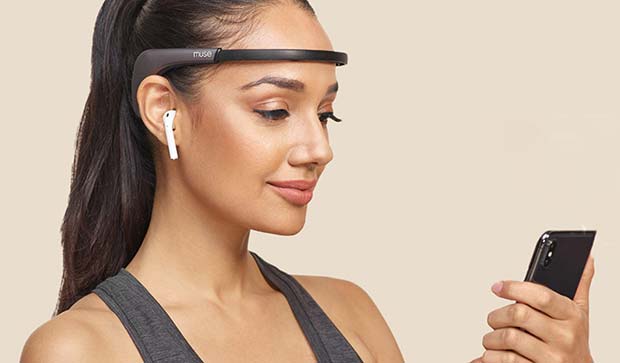It’s often said that our connection to the spiritual world has become increasingly unclear due to technological and material wants. That we cannot connect with our ‘higher selves’ with so much ease due to our constant distractions otherwise. While that might be true, it’s also true that a recent technological development might just be about to change all that. You see, a new headband of sorts could be used to help you train your brain into a meditative state.

Many people try out meditation with little to no success, unable to create the harmonious circumstance needed to make it work as they would have intended. They try and focus the mind to a sharper level, and do all they can to try and create that inner connection. The first step, though, is the hardest: because to make that leap, you need to get what is going on in the brain in the first place.
This headband, then, is supposed to be the solution to this particular issue. While in the past you would need to undergo an electroencephalography (EEG) scan, this removes much of that challenge. The cost, time and the equipment needs meant that many of us would simply go without ever trying this out. The Muse headband, though, is going to do a lot to try and change that important perception.
Harnessing the power of the brain
This ‘brain training’ device will be used to help people get meditation ready in a short space of time. It’s all about releasing those billions of neurons into the human travel all work through our body in such small but important ways. By placing electrodes on the scalp during an EEG, we can track such movements.
With five brainwave types of the major category all worked out, this headband is supposed to help people understand all of this. From the slowest delta waves to the rapid gamma waves, you will be able to get a bit more understanding about how the brain works, and how you can get yourself into the right frame of mind.
However, the important thing to remember is that the brain of a regular meditator will be in totally different shape to your own. It’s like comparing your own physical fitness against that of a Premier League footballer. You should instead look to appreciate that many findings in the past show that the brainwaves of an experienced practitioner will differ from your own. Long-term graspers of meditation often find their lightbulb moment without the same reaching and grasping – they can focus on their needed thoughts easier.
The Muse, then, looks to combine classic old style meditation learning and ‘brain teaching’ into a headband. This wearable tool would allow you to determine and detect the activity of your brain better, allowing you to get real-time audio feedback to try and improve your meditative state.
If you are ever interested in trying out meditation and finding your zone with greater regularity, this is the best way to try it out. Overcoming that first hurdle is often the biggest challenge: now, you can make that much easier. In fact, I’ve personally gotten the upgrade, the Muse2 and give it two thumbs and two toes way up!

